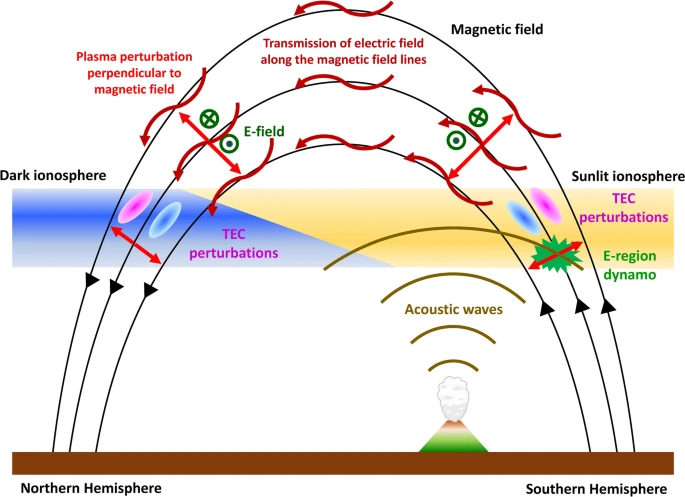Phys.org July 14, 2022
Researchers in Japan believe that it may be possible to predict tsunamis faster by tracking the atmospheric disturbances caused by the airwaves they create and the errors in the positional information supplied by GPS satellites. Examining the errors following eruption they found that it caused waves of air pressure to spread as far as Australia and Japan. These waves oscillated the lower part of the ionosphere and generated an electric field that was then transmitted at high speed to the upper ionosphere. They detected the electron changes much earlier than the air pressure waves that caused the tsunami. The structures of the disturbance over Japan and Australia mirrored each other despite being in different hemispheres. The team calculated the speed of these disturbances and found the electromagnetic wave along the magnetic field lines traveled at 1,000 kilometers (621.4 miles) per second. This was far faster than the air pressure wave, which traveled at the speed of sound (a comparatively slower 315 meters (0.2 miles) per second). They captured the signal of the ionospheric disturbance caused by the air pressure wave about three hours before the pressure wave originating from the volcanic eruption. According to the researchers future applications of their technique may make it possible to estimate tsunami wave heights and sizes from ionospheric disturbance signals to provide tsunami alerts…read more. Open Access TECHNICAL ARTICLE

Graphical abstract. Credit: Earth, Planets and Space volume 74, Article number: 106 (2022)